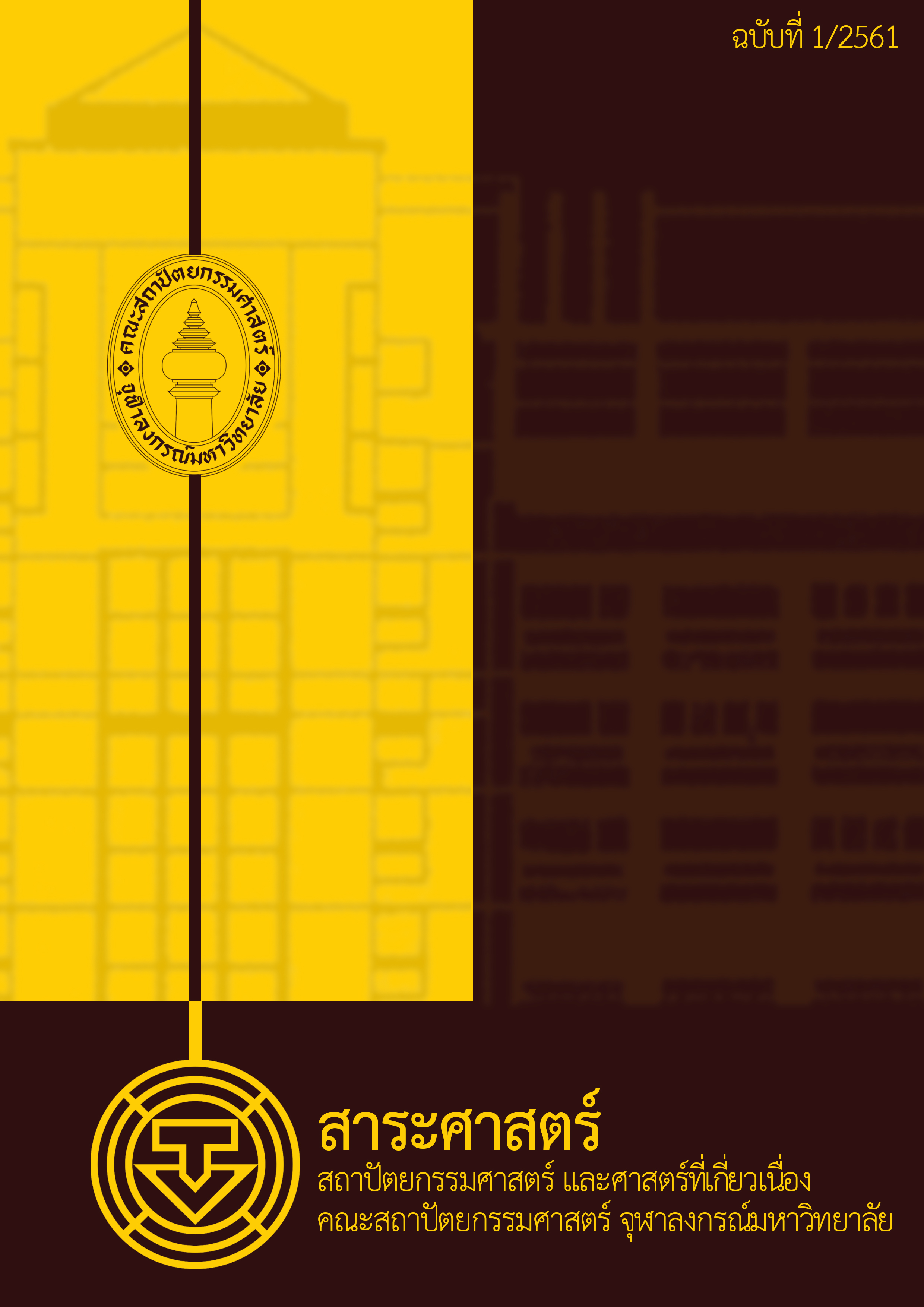Evacuation Routes of Inpatient Wards Case Study: High Rise Building of Government Hospital High Rise Building of Government Hospital
Main Article Content
Abstract
Inpatient wards in high-rise building of government hospitals, which are public buildings, have the risk of fire damage. Because many occupants stay in the building for a long time and there are various classifications of patient (self-care to intensive care). Nowadays, the laws of evacuation routes are enforced on hospital as same as other building. They are not consistent with type and usage of inpatient ward that are different from other building.
The purpose of this research is to study the consistency between laws, design and usage, in addition, to study causes and problems of design and usage of evacuation routes. The research method is divided into 4 steps: 1) To review the literature about inpatient wards, laws, standards and principles of the fire evacuation. 2) To study and analyze evacuation routes of 23 architectural drawings. 3) To interview with 3 samplings, architects, users and authorities in this field, and survey evacuation routes of 7 buildings. 4) To analyze and conclude for results and suggestions.
This research found that architects design evacuation routes according to the laws, of which some rules are not consistent to international standard and usage, and they consider international standard design. Their design is not the same standard as they do not have enough safety knowledge and there are various limitations of design. For this reason, there is no complete evacuation route design that clearly indicate on the architectural drawings.
Moreover, users have the fire prevention plan and fire evacuation drill, which are planned and specified according to their understanding. Users usually change certain usage that may affect evacuation since users do not know design purpose. They prepare the area before evacuation. Therefore, real fire evacuation is not consistent with fire evacuation drill.
Article Details
References
รุ่งทิวา พิมพ์สักกะ. 2559. “การจำแนกประเภทผู้ป่วย.” สืบค้น 2 เมษายน 2560.
https://sunpasit.go.th/booking/docs/b961ab7b85dad47e894efd92113e887e.pdf
สำนักงานสถิติแห่งชาติ. “คำนิยามและการจำแนกข้อมูลที่สำคัญ.” สืบค้น 2 เมษายน 2560. https://service.nso.go.th/nso/knowledge/knowledge09/hospital.pdf
National Fire Protection Association. NFPA 101 Life Safety Code. Quincy, Massachusetts: National Fire Protection Association, 2000.
Pan American Health Organization. “HOSPITALS DON’T BURN! Hospital Fire Prevention and Evacuation Guide.” Accessed 18 January 2017. https://eird.org/pr14/cd/documentos/espanol/ CaribeHerramientasydocumentos/Saludyestacionesdesalud/HospitalsDontBurn_high.pdf


